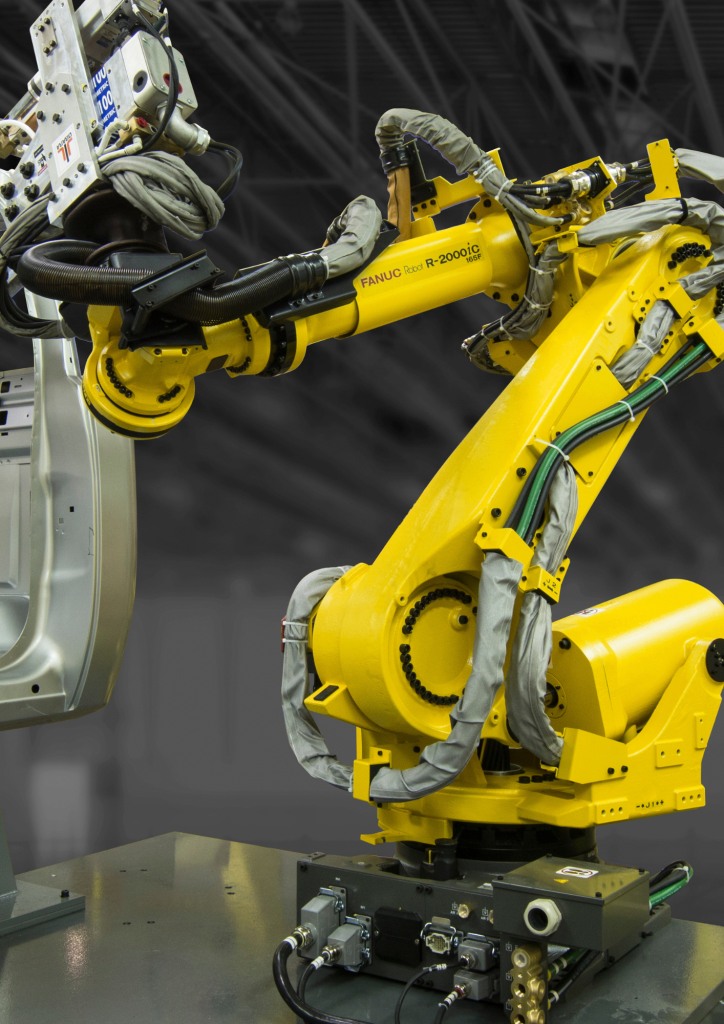In the midst of manufacturing today, robot arms are changing the rules of production, blending accuracy, safety, and efficiency in ways that were unimaginable. Robots are mechanical marvels that are now essential to many industries around the world. They were invented to cut operating costs and keep high standards of quality. Robotic arms are being incorporated into production lines to lower costs and improve security. Let’s see how these cutting-edge machines are reshaping the landscape of industrial production.
Cost efficiency is a major driving factor behind the global acceptance of robotic arms. Factories have to constantly work to minimize production errors, reduce material waste, and lower work-related accidents. Robotic arms are specifically designed to solve these issues. Contrary to human laborers, robot arms can perform repetitive tasks with pinpoint precision which eliminates costly errors and reducing raw material wastage. Robotic arms are utilized in industries with high volumes for example, the automotive industry, to guarantee an exact assembly. This accuracy can translate into significant savings since fewer damaged items mean less rework and less waste.

Image credit: automatedsolutions.com.au
The security of robot arms is an essential element. Numerous manufacturing tasks, like working with hazardous materials or employing heavy machinery could be hazardous for humans. Robots can help companies remove their employees from dangerous work environments and prevent the risk of injuries at work. A robotic arm, designed as a kinematic chain of movable joints, mimics the functionality of a human arm but operates without the risk of physical harm. Equipped with hand end effectors, these machines can accomplish tasks that could be hazardous for humans, such as welding or spinning.
The flexibility of robotic arms is what makes them an effective game changer across different industries. Robot arms can handle many different tasks. From assembly of automobiles, to electronics production. The fact that they can be programmed allows them to execute complex tasks that include tending to machines painting, painting, or fiberglass application, with unmatched consistency. In warehousing and storage, robotic arms have changed palletizing by making it easier to load goods onto pallets using precision and speed. The automation increases productivity and efficiency because robot arms operate continuously and never get tired.
One of the most exciting advancements in this field is the growth of collaborative robots or cobots. They interact with human employees. As opposed to traditional industrial machines that are limited to isolated cells, cobots outfitted with robotic arms are designed to allow safe, seamless interaction with humans. The robotic hand of a cobot can be used to perform heavy lifting and repetitive tasks in factories, so that workers can be freed to take on more challenging duties. This collaboration enhances productivity and ensures a safe work space, since cobots are programed to stop or modify their movements when a human is nearby.
Robotic arms have a significant influence on the modern production and not only in terms of safety and efficiency. Their capability to do tasks such as welding, assembly, or handling materials with precision is what makes them essential in high-stakes industries. In the automotive industry for instance the robot arm is able to turn and move parts in the assembly process to ensure that they are aligned perfectly without the requirement for human intervention. Robots are also utilized in electronics to manage delicate components. This helps reduce damage and also improves the quality of output.
As the world’s industries continue to develop robots’ roles will grow. They will be a key element in the future of manufacturing because of their ability to lower costs, enhance safety, and be able to adapt to different tasks. By combining cutting-edge technology with human creativity robotic arms aren’t just tools they’re partners in advancement, bringing innovation to the forefront and transforming how we construct our world.
